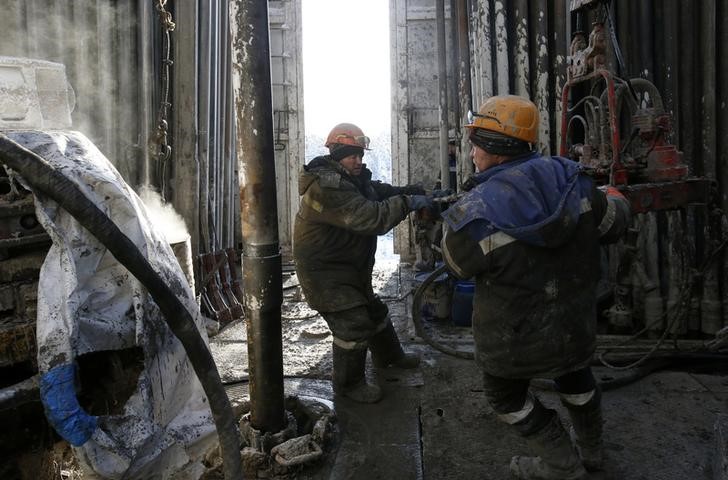(Bloomberg) -- Commodities are booming again.
The Bloomberg Commodity Index is up more than 9 percent from its late-June lows, outpacing the S&P 500 Index’s 6 percent advance over the same stretch.
Signs that the long-awaited rebalancing of the global crude market is at hand have pushed Brent futures to two-year highs, while West Texas Intermediate isn’t too far behind. And it’s not just oil: Synchronized global growth and China’s crackdown on capacity in a bid to help clean up the environment have fostered gains across the spectrum for raw materials.
Even more impressive for the broad commodity rally: It’s occurring amid back-to-back months of gains for the Bloomberg Dollar Spot Index, typically a headwind for raw materials.
Here’s a look at how commodities have gone from bust to boom:
The six-month futures spread for West Texas Intermediate has dipped into backwardation for the first time since 2014 -- nearer-term contracts are pricier than later ones.
This curve marks a successfully rebalancing market. The WTI’s previously upward-sloping front end encouraged shale producers to lock in future production thanks to the higher prices on longer-dated contracts; the reverse will help further alleviate the glut in crude.
There’s also been a near-relentless draw in U.S. oil inventories since March -- a chief aim of the deal made by OPEC and other major producers in late 2016 to curb output -- and the number of active U.S. rigs has gradually declined from an August peak, implying a limited supply response to the rally in prices.
Equities have reflected these changes, and major producers have been steadily finding a way back to normality. The bright outlook for energy prices has boosted Exxon Mobil Corp (NYSE:XOM). despite lackluster third-quarter results. ConocoPhillips (NYSE:COP) is on the verge of a 52-week high after its better-than-expected figures, while in Europe both BP (LON:BP) Plc and Total SA (PA:TOTF) are trading at multimonth highs after beating revenue expectations and posting a jump in profits, respectively.
Metals are also on a tear, giving traders and industry experts gathered for LME Week in London plenty to cheer about. From aluminum to zinc, just about everything is up. Codelco, the biggest copper producer, suggested a run toward the all-time high of $10,190 a ton may be possible. Expectations of surging battery demand are buffering nickel prices. But the real star of 2017? That’s palladium. The metal is heading for its highest close since 2001 thanks to its role as a key component in curbing emissions in gasoline-powered vehicles.
A testament to firming demand buoying metals prices: Inventories on the London Metal Exchange continue to shrink.
“The extreme optimism shown by experts during LME Week helped the nickel price achieve a spectacular turnaround,” analysts at Commerzbank (DE:CBKG), including Eugen Weinberg, said in a note. “Most metals currently find themselves in supply deficit.”
Even platinum, the worst performer among precious metals, has turned a corner, rising 1.4 percent to $929.46 an ounce. Worries about declining demand for diesel cars, its main market, haven’t deterred investors from increasing holdings in platinum exchange-traded funds to their highest since August.
The rally has even extended to some of the lesser-known metals. Ruthenium and rhodium posted impressive rallies in October. Rhodium, used to curb emissions, has benefited from Europeans’ shift away from diesel-powered vehicles. Ruthenium is used in organic light-emitting diodes and water purification.
